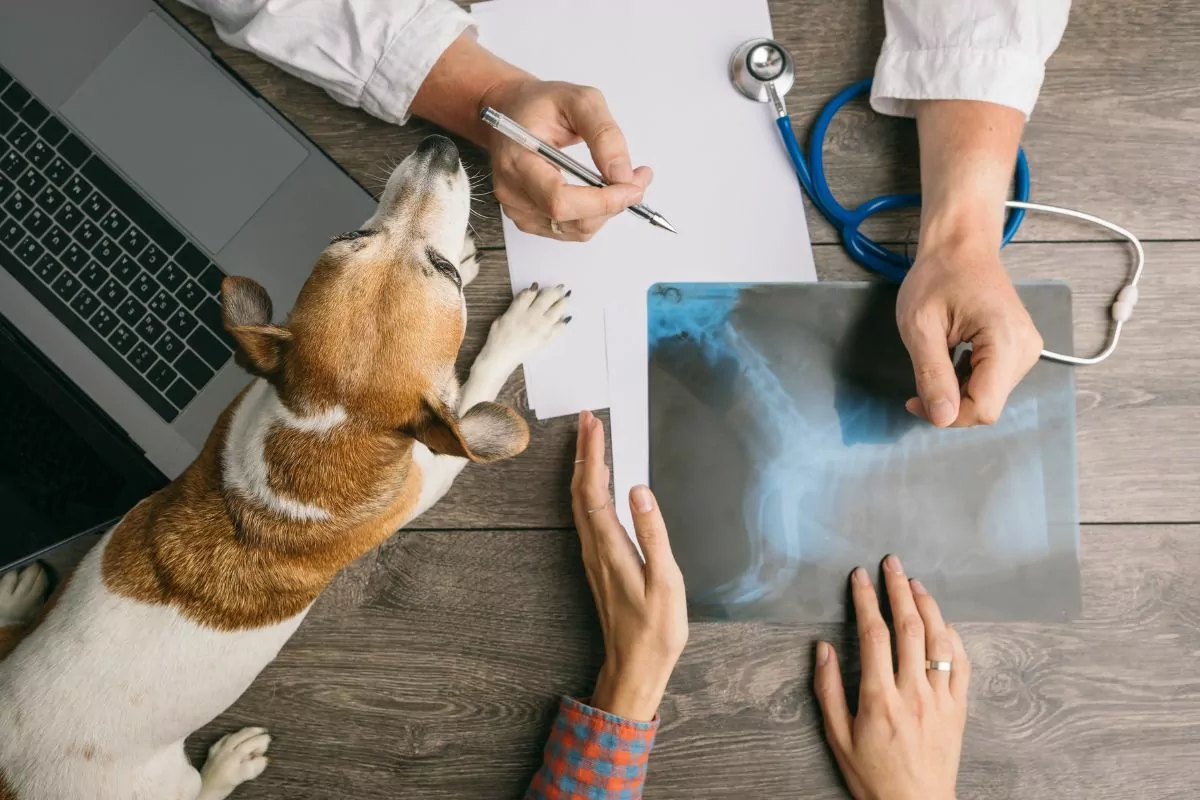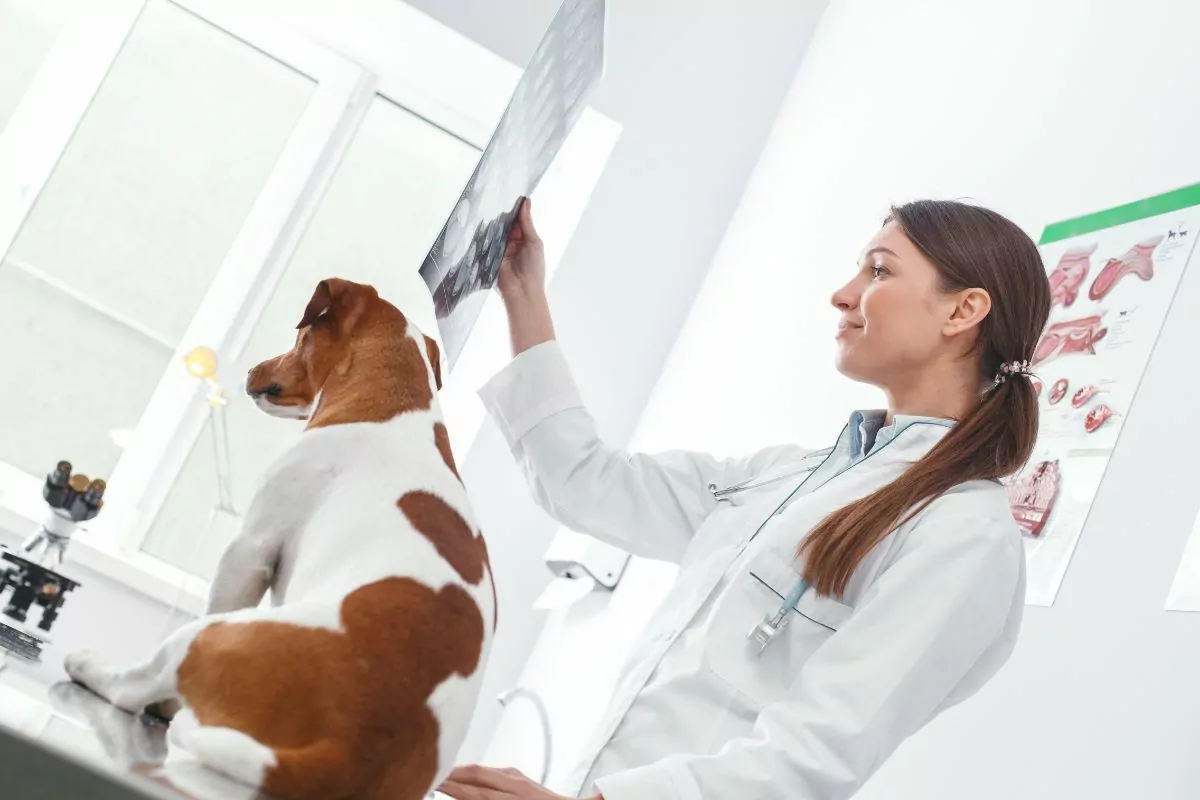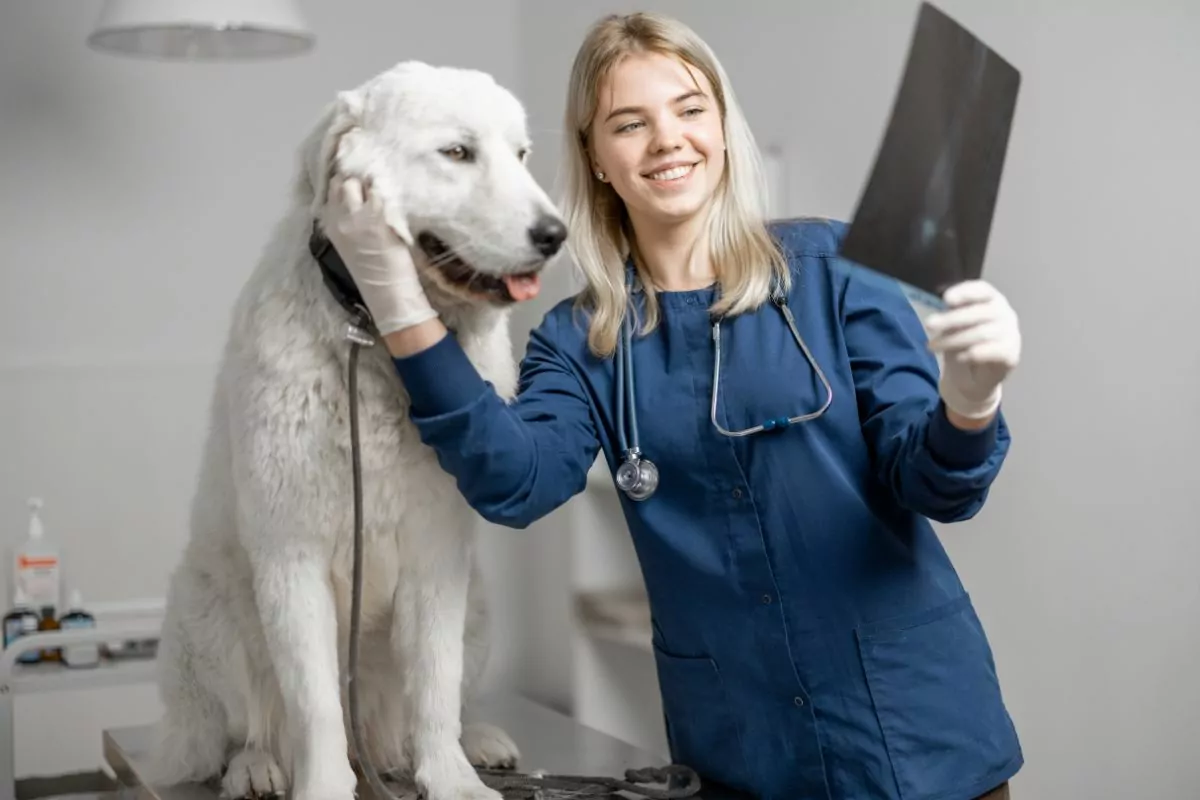Radiographs for Dogs
Radiographs for dogs or dog X-Rays are among the most popular and beneficial medical diagnostic procedures. The word “X-Rays” dates back to 1895, when German physicist Wilhelm Röntgen made the discovery. He named his work “On a New Kind of Rays” and used the term X-Rays instead of unknown rays. Read on to find out what to expect from radiographs.

How Much are Dog X-Rays?
So, how much is an X-Ray for a dog? Dog X-Rays typically cost around $250. Your pet won’t feel any pain throughout the operation, which is affordable and minimally intrusive. However, your dog will need to be motionless for a long time.
With a dog, this is considerably more challenging to execute than with a person. Most dogs need sedation during the X-Ray procedure to ensure a clean image and enable your veterinarian to diagnose any potential problems with your furry friend.
Because of this, the price depends in part on the size of your dog. Larger dogs typically cost more since they need more sedative medications than smaller pets. Your dog might require more sedatives or possibly general anesthesia for the treatment if they are particularly anxious or distressed.
Why are Dog X-Rays So Expensive?
Depending on several variables, a dog’s X-Ray can cost around $80 and $400 or more. Where you decide to take your dog might significantly impact the price.
Generally speaking, a large veterinary clinic will be more expensive than a vet in a small town. Animal welfare groups in certain places provide low-cost medical exams, which may include dog X-Rays.
The cost will be more if you take your dog to an emergency clinic rather than the vet’s office. Based on one X-Ray, the price range is between around $80 to $400. One X-Ray may not be enough to diagnose your dog’s fractured leg or broken bones in more than one place. This is especially true if the accident impacted many body parts.
The price also depends on your dog’s size. In certain cases, a small dog only needs one X-Ray. A huge dog, like a German shepherd, could need several X-Rays merely to see inside of it.
Without some form of medicine, it could be challenging to persuade your dog to lie motionless during the X-Ray. The dog will need sedation in this case. The cost of the X-Rays will increase due to anesthesia and pain medication.
What Do Dog X-Rays Diagnose?
One of the most useful and frequently applied instruments in both human and veterinary healthcare is the X-Ray. An X-Ray of a dog can help veterinarians diagnose conditions like bladder stones, fractured bones, swallowed foreign objects, and more by giving them a glimpse of your pet’s bones, tissues, and internal organs.
The best times to use X-Rays are when observing solid tissues and bodily parts with differing tissue densities. For instance, a vet can administer a dog chest X-Ray. The lungs in the chest absorb very little X-Rays because they are mostly air-filled and have a very soft density. The bony ribs are firm and very dense, but the heart muscle is denser.
A vet can observe large blood vessels inside the lungs and the heart silhouette on an X-Ray because the blood’s venous and arterial walls are denser than those of the surrounding lungs. Pulmonary edema, where fluid builds up in the lungs, is also easily visible.
A vet can identify numerous organs in the abdomen or foreign bodies stuck in the intestines. A dog spleen X-Ray and dog hip X-Rays are good since they determine the size and form of the spleen and hips. It may be more challenging to recognize the numerous internal organs in animals with excessive obesity or little body fat.
Dental radiographs are crucial for identifying which teeth are healthy and which ones require extraction. A dental radiograph can reveal abnormalities beneath the gums that would otherwise go unseen, such as injury to the tooth roots, tumors, and abscesses.
A vet cannot see the inside of the skull clearly on an X-Ray because the cranium’s bones absorb all of the radiation, making it impossible to see the brain matter.
With magnetic resonance imaging (MRI), computed tomography (CT), or ultrasound, a vet can see internal features such as the inner structure of the heart, the bladder or other abdominal organs, many joints, and the lungs.
With this straightforward and affordable diagnostic equipment, a knowledgeable veterinarian and veterinary radiologist can identify various illnesses.
How to Prepare a Canine for an X-Ray at Home
When you take your pet to the veterinarian to have a problem examined, a vet will perform an X-Ray. Therefore, there is no need for preparation. Then, if an X-Ray is necessary, your veterinarian will inspect your pet and take some time to go over the process and what they will be looking for.

Do Dogs Get Sedated for X-Rays?
Sometimes sedation is necessary to obtain a clean X-Ray. A dog won’t need sedation if it’s calm, not in too much pain, and can lay comfortably while the vet takes the X-Ray.
On the other hand, sedation is necessary if your dog is jittery, apprehensive, or in pain. Sedation is also essential if the dog’s muscles need relaxation to acquire a clean image. Other instances that need sedation are if the X-Ray is of the teeth, skull, or spine. During an X-Ray for puppies, a vet will need to sedate them.
Are X-Rays Canine-Safe?
While X-Ray use is typically safe for dogs, it involves radiation. Therefore, vets usually use X-Rays on occasion and utilize them as a diagnostic tool. Veterinarians perform pregnant dog X-Rays occasionally to learn more about a dog’s pregnancy. Alternatively, they may use ultrasound or other imaging techniques.
Speak to your veterinarian if you have issues with the usage of X-Ray equipment and the health of your dog. To decide if you want your dog to get an X-Ray, your veterinarian can explain the risks and benefits of your dog’s situation.
The Benefits of Using X-Rays for Dog Diagnosis
X-Ray imaging equipment uses electromagnetic waves to create images of your pet’s muscles, bones, and internal organs. They are quick and not painful. Your animal faces very little radiation when using an X-Ray machine.
The American Cancer Society claims that a typical chest X-Ray exposes the patient to the same amount of radiation for ten days compared to normal exposure.
The main advantage of an X-Ray for your dog, as with most types of medical imaging, is a precise diagnosis. An X-Ray may show several health issues. It might indicate the precise position of the break, for instance, if your dog’s veterinarian suspects a fractured or broken bone.
It can even detect invisible spinal injuries and objects like chewing toys or socks that your pet ingested and are making your dog ill. A vet can also see dental decay, arthritis, bone cancer, and bone infections on X-Rays. Your veterinarian could request an X-Ray to identify additional abnormalities, like heart or lung difficulties.
Your veterinarian can recommend a more suitable course of action when they know the precise location and type of the issue. A veterinarian can use an X-Ray’s findings to predict how long your dog will recover from an illness or accident. In short, an X-Ray can reveal the cause of your dog’s pain.
Canine X-Ray Limitations
The most accurate method for determining your dog’s health issue isn’t necessarily an X-Ray. Tests on the urine, blood, urine, or feces of your animals may assist make a more accurate diagnosis for some disorders. If your veterinarian is confident in their diagnosis following a thorough physical examination, they might not even need to run a further test.
Separating X-Rays from other diagnostic imaging techniques like ultrasounds is also crucial. Medical ultrasounds use high-frequency sound waves to create real-time videos and photos of soft tissue organs like the uterus, bladder, and heart of animals.
Although vets frequently use ultrasounds to determine whether a dog is pregnant, they are also extremely useful for many other medical diagnoses.
Your veterinarian can advise magnetic resonance imaging (MRI) or a CT scan depending on the symptoms. These high-definition imaging methods help locate minor issues in your pet that may be more difficult to detect or diagnose with an X-Ray.
Compared to X-Rays, these tests are typically more expensive. For instance, you should budget $300 to $600 for an ultrasound. However, you might be able to avoid the excessive expenditures of medical imaging if pet health insurance covers your dog.
Does Pet Insurance Cover Dog X-Rays?
Vets use X-Rays frequently with other procedures and therapies. You will need to compensate your veterinarian for their time and diagnosis, at the very least.
You can receive compensation for the high costs of ultrasounds, X-Rays, and other imaging procedures if you have pet insurance. Frequently, the reimbursements you receive for pricey veterinary services outweigh the pet insurance expense.
Pet insurance policies sometimes cover wellness checks and other sorts of routine care at the vet. An accident/illness plan with a wellness component may pay for the checkup, your dog’s diagnostic testing, and the treatment and meds your dog requires to recover if you bring your dog in for a routine examination and the vet discovers a problem.
When are X-Rays Not Covered by Insurance?
Pet insurance doesn’t always provide coverage for diagnostic imaging procedures like X-Rays. Depending on your insurance, it might. For instance, a wellness plan is unlikely to cover more extensive assessments and treatments, whereas a comprehensive plan would.
If the need for an X-Ray relates to a past problem, older animals or those with pre-existing conditions may not be eligible for expense reimbursement. If you only recently signed up for pet insurance and are waiting, you might not be eligible for coverage.
- Pre-existing conditions: Some organizations or insurance plans don’t provide coverage for ailments your pet has or previously had. However, some insurance policies have a clause that states that after a specific number of days, a past condition that a vet handled no longer exists.
- Type of coverage: The kind of pet insurance policy you have will determine whether it covers X-Rays. For pet owners who wish to pay for routine visits, wellness plans are a popular option. However, they do not cover X-Rays or other treatments for accidents or illnesses. For that, you’ll need a thorough plan.
- Waiting period: There is a waiting period after purchasing pet health insurance before coverage begins. You will pay out of pocket if your pet has an accident and requires an X-Ray during this waiting period.

Recap
You could become anxious when your veterinarian informs you that they must request an X-Ray. Even worse than your dog’s illness or injury is the prospect of how much money you’ll have to spend. While certain X-Rays can cost money, others are fair in terms of price.
The price of this operation varies widely, so if you’re concerned that you’ll have to pay for X-Rays in the future, you might want to consider getting pet insurance for a reasonable monthly cost to rest your mind.
